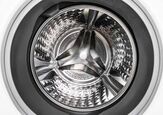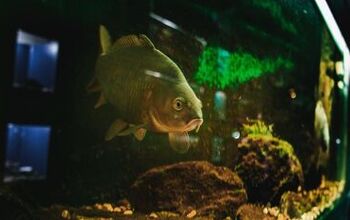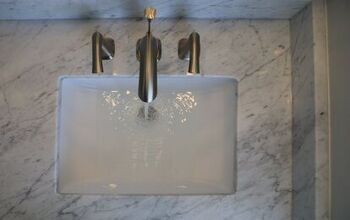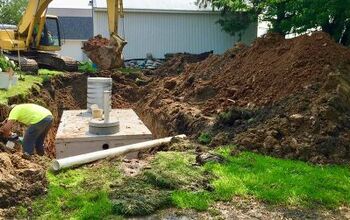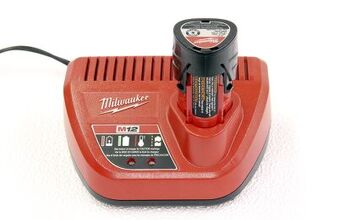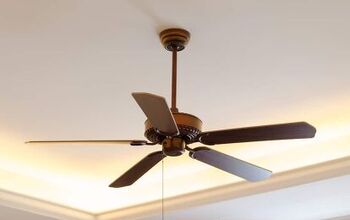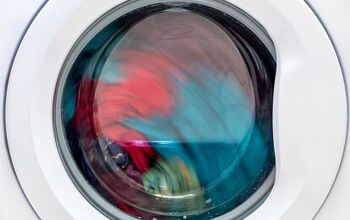Do Fish Tanks Cause Mold?

Owning a fish tank is rewarding, even if it takes a lot of work. However, it’s easy to forget about how your fish tank can affect the rest of your house. So, can a fish tank cause mold?
Your fish tank can cause mold in the house if the surrounding area is poorly ventilated. This can also happen if you wait too long between water changes, then spill a lot of water when you change it. The longer you let dirty aquarium water sit, the more likely you are to find mold at home.
That’s why you must patch leaks, replace broken glass, and wipe the floors after changing the water. Follow along as we explore everything you need know about how fish tanks can cause mold.
Can A Fish Tank Cause Mold In The House?
A fish tank can cause mold in the house, but the mold is often limited to the area near the tank. For example, you may find mold behind or underneath your fish tank. That said, mold spores can enter your home's air ducts and spread throughout your other rooms when the HVAC system runs.
However, many factors affect whether or not your fish tank will cause mold in the house. Everything from how often you change the water to how well your home is ventilated can contribute to whether or not you get mold. That said, fish tanks can primarily cause mold for a few simple reasons, including:
1. High Humidity
Naturally,in some cases, a fish tank can raise the indoor humidity level in your home. That’s because the water in your fish tank will slowly evaporate and moisten the air. Some people find specks of mold on the wall behind their fish tank, and it’s because of evaporation.
However, high indoor humidity can contribute to mold throughout the house, so you may not find it near the tank itself. You must also be careful about what you do with the mold near your fish tank. For example, you shouldn’t scrub the mold near your fish tank without treating it first.
That’s because mold spores can disperse into the air when you scrub them, and they can spread quickly. Instead, you must spray the mold with white vinegar and water, let it sit for 10-15 minutes or longer, and then scrub it. That way, you can remove the mold without sending spores through the air in your house.
2. Leaks And Spills
Aquarium leaks are as common as they are frustrating, and they can cause mold in the house. The biggest sign that your fish tank is leaking is that it keeps losing water. Granted, this can happen because of high temperatures speeding up evaporation, but tanks lose water faster due to leaks.
Leaks can occur because of cracks and weakened seals in your fish tank, and they often start small. However, the pressure of the water and the weight of the glass can eventually worsen the leak. The sealant can also wear away and let water escape through the gaps.
Severe leaks can cover the wall behind the tank and the ground around it with water. The longer this water sits and pools, the more likely you are to find mold in the area. It’s worth draining your fish tank and patching the leaks or replacing the glass to prevent mold in the house.
3. Poor Ventilation
Fish tanks can sometimes contribute to mold even if no leaks are present. That’s because any large tank of water is bound to affect the moisture level in the air. This is true even if the evaporation rate is normal and your fish tank doesn’t quickly lose water.
Putting a fish tank in a poorly ventilated room is a recipe for disaster, as doing so can contribute to mold. Mold and mildew love moisture and stagnant air, both of which are abundantly present in poorly ventilated rooms with aquariums. Moisture won’t disappear if there’s no air movement, so the surfaces will remain wet for a while and
it won’t take long for mold and mildew to form. Even the wallpaper in the room can eventually become moldy if it stays damp for days or weeks. Ideally, you should put your fish tank in a well-ventilated room with a vent and or a fan.
How To Prevent Mold In A Room With A Fish Tank
Preventive maintenance is key to stopping mold from growing in a room with a fish tank. Careful planning ensures you can quickly correct the situation when leaks and excessive moisture arise. You can prevent mold in an aquarium room with a few simple steps, such as:
1. Use A Dehumidifier
Dehumidifiers can help with a lot of the problems around the house, such as mold, mildew, floor damage, and peeling wallpaper. You can also benefit from using a dehumidifier if you have bad allergies and are sensitive to musty smells. However, dehumidifiers are essential for aquarium enthusiasts.
Program your dehumidifier to maintain an indoor humidity level of between 30% and 50% at all times. Once the humidity level reaches the 50% to 60% range or higher, there’s a good chance mold and mildew will form. You can even use a simple, small dehumidifier and put it in the room with the fish tank.
However, it’s worth getting a few small dehumidifiers if you struggle with excessive humidity throughout the house. That’s especially true if you have a lot of plants in your house.
2. Routinely Clean The Tank
Fish tank maintenance isn’t necessarily fun, but it comes with the territory. Fish tanks are prone to lots of bacteria, both good and bad, and in some cases, can affect the area around your fish tank. That’s especially true if your fish tank leaks and you perform regular water changes.
Spilling water is bad enough, but things get worse when the water is dirty and full of bacteria. You can ensure the water doesn’t get too filthy if you change the water once every 2 weeks. This is also the best time to thoroughly clean the tank inside and out.
Wipe the outside of the tank to ensure water doesn’t linger and contribute to mold. It’s also important to check the space behind and underneath the tank and clean up spills as needed.
3. Clean Spills Immediately
It's not unusual to have big spills while changing the water in your tank. After all, you must drain the water into a bucket, carry it elsewhere, and dump it. Spilling water is almost inevitable, but that doesn’t mean you should let the spills sit for too long.
Pay attention and be careful during water changes, or else you may miss some spills. Establish an easy path from the fish tank to the location where you plan to dump the water. Be careful if you spill the water into your bathtub, as dirty water may linger for a while.
In that case, you should run some hot water for a minute to wash the bacteria-filled water away. After that, run the ventilation fan in the room or open a window.
Check the path you walked with the bucket of dirty water and wipe any spills with a clean towel. It’s also a good idea to put the bucket you used for the water change outside. Wash it with a house and let it dry in the sun to prevent mold from growing.
Summing It Up
Fish tanks can contribute to mold in a house, but you can easily prevent this problem if you’re careful. For example, you can run a dehumidifier in the room with the fish tank. Clean your fish tank at least twice per month, patch leaks, and wipe spills each time you change the water to prevent mold.
Related Guides:

Nick Durante is a professional writer with a primary focus on home improvement. When he is not writing about home improvement or taking on projects around the house, he likes to read and create art. He is always looking towards the newest trends in home improvement.
More by Nick Durante

